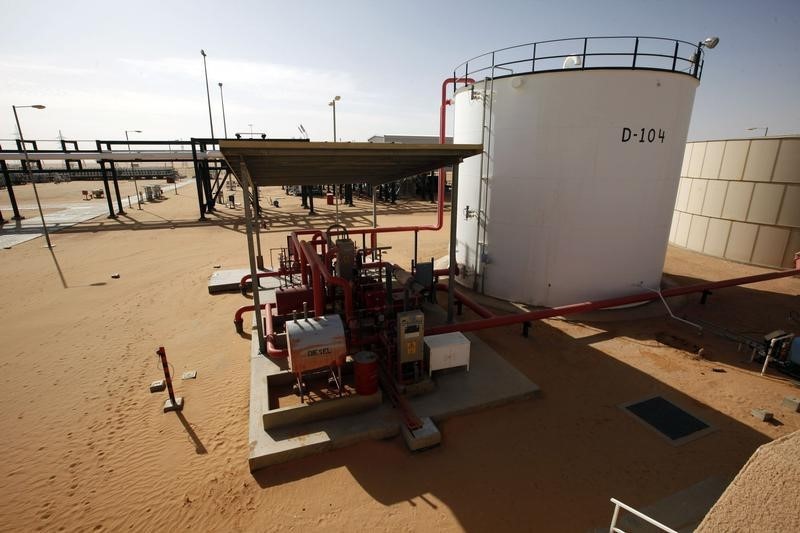By Barani Krishnan
Investing.com - If oil funds can't get any more news on Saudi production cuts, then any positive news on the U.S.-China trade war would seem to do.
Prices of New York-traded West Texas Intermediate crude and London's Brent rose on Friday, heading for a third weekly gain in four, as traders awaited President Donald Trump's trade meeting with China's Vice Premier Liu He.
WTI settled up 30 cents, or 0.5%, at $57.26 per barrel. It hit a three-month high of $57.81 earlier.
Brent, the global oil benchmark, was down 10 cents, or 0.2%, at $66.97 per barrel by 3:03 PM ET (20:03 GMT), after hitting $67.73, surpassing a November peak of $67.72.
For the week, WTI was up about 2.3%, while Brent was around 1% higher.
Crude prices were also supported somewhat by this week's drop in the U.S. oil rig count. The rig reading, published by industry firm Baker Hughes, showed drillers cut four rigs this week after raising them by 10 over two prior weeks. An early indicator of future output, the total rig count at 853 is still higher than the 799 rigs active at this time a year ago.
Analysts said the path of least resistance in oil was certainly higher, although counteracting fundamentals were strongly building against the crude rally.
"I feel like the rally we have seen has been a combination of CTA buying and strong physical markets," said Scott Shelton, energy futures broker at ICAP (LON:NXGN) in Durham, N.C.
But Shelton, one of the more pragmatic bulls in oil, thinks that some of the CTAs behind this year's 25% rally in crude were also neutral in their mid- and long-term view on the commodity.
"The question is whether or not they will get long," he said. "Spending another week above the 100-Day Moving Average may generate that as the market confirms the level, but I am dubious about the general macro as the last shoe to drop to me on that side is the Chinese-U.S. trade deal. I wonder what will be next to drive the bullish rhetoric."
Record crude exports out of America were saving the day for oil bears, data from the U.S. Energy Information Administration showed on Thursday, as domestic production hit the magic 12-million-barrels-per-day figure last week.
The EIA forecasts that U.S. output will reach 13 million bpd by the end of 2020, the most that any country has ever achieved in daily production. But some analysts, including those at Citigroup (NYSE:C), believe that figure will be achieved this year.
“We see total U.S. crude production hitting 13 million bpd by year-end, with 2019 averaging 12.5 million bpd,” Citigroup's analysts said. Exports could scale 4.6 million by then, versus last week's record of 3.6 million.
The surge in U.S. production could offset OPEC cuts led by Saudi Arabia, warn oil bears who say that total supply is what will matter to the market despite American shale being a lighter variant oil of the heavier grade produced in the Middle East.
